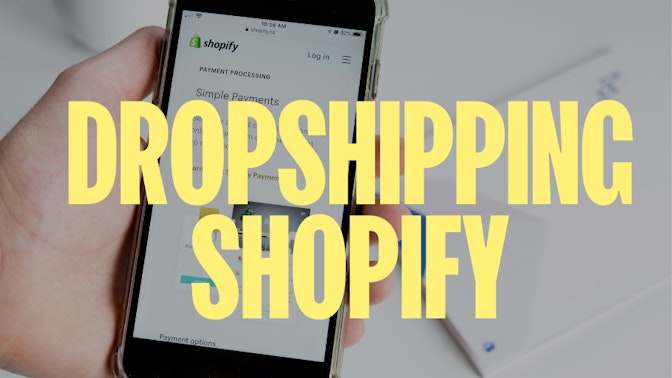Creating a pricing strategy for your ecommerce business is essential, but it certainly isn’t simple.
It takes time to land on the “right” price for your products. That’s true regardless of how much experience you have as an entrepreneur.
But, when it’s your first time launching an online business, coming up with a pricing strategy is especially tricky.
You need to factor in all of the costs that you’ll incur when you’re selling your products (including marketing campaigns) and come up with prices that your customers love and allow you to maximize your profit margins.
And when you consider that price is one of, it not the most important factor that helps shoppers decide where they’re going to shop, you’re going to want to nail your pricing strategy.
That’s exactly why we’ve created this post. We’re going to dive into the popular pricing strategies that ecommerce businesses use, and break down which one is best for your business.
At the end of this post you’ll know everything that you need to come up with a pricing strategy that you can implement today.
So, let’s jump into it, shall we?
What is a Pricing Strategy?
Before we dive too deep, let’s take a step back and explain what a pricing strategy is. Essentially, a pricing strategy is a a set of rules or methods that businesses can use to price their products and services.
Make no mistakes, pricing strategies are marketing tactics, and nailing your pricing is one of the best ways to improve your conversion rate.
→ Click Here to Launch Your Online Business with Shopify
Running an online business without a pricing strategy is like running a race without a track. You need to have a pricing strategy in place when you’re running an online business so you can make sure that you don’t price your products too high, or worse, too low.
Pricing Strategies for Ecommerce: Cost-based Pricing

Okay, first up we’ve got the cost-based pricing strategy.
We’re kicking off with this pricing strategy because it’s undoubtedly the simplest one.
Cost-based pricing is essentially coming up with a price for your products by adding the cost of your products (including shipping costs) and the margin that you want to make from each product.
Of course, you’ll need to factor in the marketing costs into these prices too, otherwise you’ll run the chance that you could makesales without actually making any profit.
How Does Cost-based Pricing Work?
When you’re creating a cost-based pricing strategy for your business, there are two main things that you need to worry about.
The total cost that you incur when you’re making a sale, and the profit margin that you want to make per sale.
So, let’s use an example to show exactly how cost-based pricing works.
Let’s say that you’re running an online women’s clothing store, and you’re selling crop tops.
You’re dropshipping, so you won’t need to worry about production costs, as you’re purchasing your products directly from your supplier every time you make a sale.
It costs you $5 to source your products from your supplier, and $2 to ship the products to your customers.
That takes you to $7 in total.
Then you set a cost of $5 more per product for Facebook ads to draw in traffic to your online store and land a conversion.
So, in total you’ll spend $12 to source a product, make a sale, and ship it to our customer.
Pretty simple so far. Next, you’ll need to decide the amount of money that you want to charge per product to complete this cost-based pricing strategy.
You could try selling the crop tops at $15 each, or even $20, and see if you can land the sales – you’d be earning a decent profit at both of those prices.
Advantages of Cost-based Pricing Strategies
Honestly, cost-based pricing is just so simple, which is why it’s a good option for beginner entrepreneurs.
You can create a pricing strategy without in-depth research into your customers, or the market you’re operating in.
If you can land sales with the marketing budget that you’ve afforded yourself in your pricing strategy, you’ll be able to rest easy knowing that every sale you land is bringing in profit.
And, of course, you can then reinvest that profit into your marketing campaigns, and try to bring in even more sales.
Disadvantages of Cost-based Pricing Strategy
The main problem with cost-based pricing strategies is that they simple aren’t customer focussed.
Instead, they’re business focussed.
You use this pricing strategy and think about how much money you want to make, rather than how much money your customer wants to pay.
It’s always important to think about your customers when you’re running a business, even if you don’t have any right now.
That’s because your customers are the fuel that powers your business. Without them, you simply cannot move forward.
Pricing Strategies for Ecommerce: Competition-based Pricing

It’s a pricing strategy that is more complex than cost-based pricing, but it’s still accessible for entrepreneurs of all experience levels.
That’s because a competitor-based pricing strategy, as the name implies, focuses on researching the competitors in your niche.
How Does Competition-based Pricing Work?
When you’re creating a competition-based pricing strategy you’ll need to analyze other brands who are selling products similar to yours, and note down the prices that they have set for their products.
And, of course, that research will spain the high-end boutiques and the budget stores.
Why? Well, when it comes to researching competitors you really want to do it right.
You want to get a strong feeling for what’s happening at all ranges of the niche you’re selling in before you can be confident in creating a competitor-based pricing strategy.
Then, you’ll use that research to choose the prices for your own products. And, if you do your research right, this pricing strategy can be really effective.
Now, you could just manually look through your competitor’s websites and check their prices one by one.
That’s totally fine – you’ll get a good understanding of the market that you’re operating in like this, even if it does take time.
But, you could also use a price tracking tool, which will collect data about your competitor’s prices for you, without the manual work.
Once you’ve got a good idea of what the average price is for the products in your niche, compare it against the cost that it takes you to make a sale, and the difference between those two figures is your wiggle room.
So, if the average price for a yoga mat is $40, but it only costs you $20 to source and sell your product, you’ll be able to price your product anywhere from $20-$50.
Not bad, huh?
Pssst! Yoga mats are on our list of the best sports products to sell in 2021. Want the rest of the list? Just click here.
Advantages of Competition-based Pricing Strategies
Competition-based pricing strategies are fantastic for making sure that you’re selling your products around the market rate.
It’s a pricing strategy that requires time and effort to implement, but it helps businesses like yours to come up with prices that are fair to you and your customers.
Disadvantages of Competition-based Pricing Strategies
If you opt to use a competition-based pricing strategy for your business, you need to be careful that you don’t enter a “race to the bottom”.
This happens when new businesses enter a niche and try to position their brands as the lowest price point.
When multiple brands are doing this at the same time, they’re slashing their profit margins too, which means they’ll need to sell more products to earn the same amount of profit as their competitors.
So, one of the dropshipping tips we often give to beginners is to find new ways to attract customers rather than slashing prices, because offering everything at a low price can have a negative impact on your company’s image.
Pricing Strategies for Ecommerce: Value-based Pricing

Okay – next we’re going to talk about value-based pricing strategies.
This is perhaps the best pricing strategy for businesses who are looking for a long-term, scalable solution to pricing their products.
And that’s because a value-based pricing strategy revolves around figuring out the value that you’re providing for your customers with your products, and pricing them accordingly.
How Does Value-based Pricing Work?
To create a value-based pricing strategy we’re going to need to blend elements of the cost-based pricing strategy and the competition-based pricing strategy.
That’s because we need to figure out how much “value” we bring, which is pretty abstract.
So, to start off we need to figure out what our “baseline” is – the lowest price that we can sell our products at.
To do that we need to note down how much it costs to source the product, how much shipping rates, and how much your projected marketing costs are to sell that product.
Add of of those figures together and we’ll land on our baseline price.
Next, we’ll need to lean into competition-based pricing tactics, and do some market research.
Take the time to identify your main competitors, and take some notes about how they price their products.
In fact, make a list of all of the prices that you find for similar products to yours.
Then we want to find the median price that your competitors are selling their products for.
To do that, it’s super simple. Just add all of the prices together, and divide that sum by the number of prices that you wrote down.
So, if you check 10 competitors, and wrote down 20 prices, you’d add them all up and divide by 20.
Phew. Don’t worry, we’re almost there.
Okay, at that point you’ll have two figures – your baseline, and your competition price.
Let’s say your baseline is $20, and your competition price is $40, that’d mean you can price your products between $25-$40 and know that you’ll be able to make profit regardless.
But deciding where exactly you put your prices on that scale is based on the value that you bring to your customers – your USP essentially.
It doesn’t matter it’s your brand’s mission, your loyalty programs, or even just the high-quality materials in your products.
You’re providing value with your business, so take action and decide where your products land between your baseline and competition price.
And once you’ve decided that, you’re good to go – you’ll have a working pricing strategy.
Not too tough, right?
Advantages of Value-based Pricing Strategies
A value-based pricing strategy is fair to both the brand and the customer.
This can help you to improve customer loyalty, and when you consider that it typically costs five times more to acquire new customers than it does to get repeat purchases from existing customers, that’s powerful.
Building a successful brand requires trust, and one of the first steps towards building trust with your buyers is offering your products at a fair price point.
Disadvantages of Value-based Pricing Strategies
The only real downside to value-based pricing is that sometimes it can be difficult to put a figure to “value”.
Ultimately, the value that you provide is only worth as much as people are willing to pay.
Nail Your Pricing Strategy Today
Great – now you know everything you need to create an ecommerce pricing strategy for your business and nail your pricing.
Remember though, pricing is fluid. Prices constantly change, and you’ll need to keep on top of your prices as you’re running your business.
You know your business best, so be fair with your pricing, and make sure that you gather learnings from every time you change the price of your products.
Your shoppers are smart, so make smart decisions with your pricing strategies.
Okay – so that’s it from us on pricing strategies. Is there anything else that you’d like to know about pricing strategies or pricing your products? Let us know in the comments below – we read them all!



